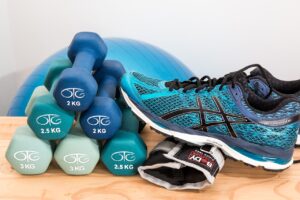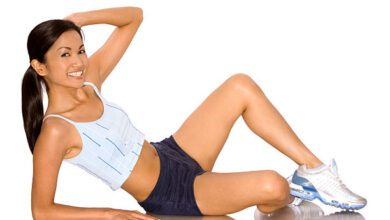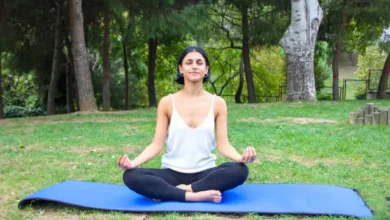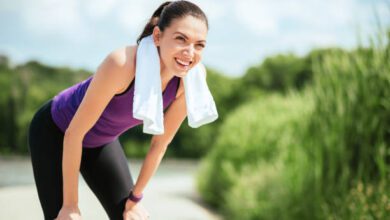Complete Guide to Fitness: Definition, Importance, and Daily Exercise Needs

You deserve a healthy body, a calm mind, and a life full of energy — so start today!
What Is Fitnss?
Fitness is a powerful approach to optimizing the body’s physiological functions and can represent a balanced composition of fat and muscle.
However, in the commonly accepted scientific definition, fitness refers to being in a state of health and full readiness for an active and dynamic lifestyle.
In simpler terms, it means a person can carry out daily activities with energy, efficiency, and flexibility — and is well-prepared to manage illness, fatigue, stress, and maintain an ideal, mobile life.
This article is a complete guide to fitness, helping you understand its importance and how to incorporate it into your daily life.
Why Fitness Matters in a Healthy Life

Fitness significantly contributes to improving quality of life because it’s directly connected to physical health.
Here are some of its key benefits:
• Stress Reduction: Physical activity increases the body’s resilience to mental and physical pressure.
• Better Sleep Quality: Exercise helps regulate your internal clock and promotes deep rest.
• Stronger Immune System: It boosts your resistance against viruses and illness.
• Confidence and Self-Esteem: A fit, healthy body enhances your self-image.
• Improved Focus and Mental Productivity: Exercise increases blood flow to the brain, improving clarity and mood.
• Healthy Weight Balance: Not just for looks, but for metabolism and reduced risk of disease.
• Easier Everyday Movements: From climbing stairs to shopping or standing up with ease.
• Long-Term Health Investment: Fitness is a true investment in your future self.
In this complete guide to fitness, we aim to highlight not just the physical benefits, but also how it boosts mental clarity and emotional balance.
-
In this complete guide to fitness, we aim to highlight not just the physical benefits, but also how it boosts mental clarity and emotional balance.
How Much Exercise Do We Need Daily?

The required amount of daily exercise depends on several factors, such as age, fitness level, training goals, and exercise history.
Someone who has been active regularly can progress faster. Teenagers have different needs than someone over 50. If you’ve been inactive for a long time, start light and gradually increase intensity. Your goals—whether weight loss or muscle building—also shape your plan.
In general, it’s recommended to get at least 150 minutes of moderate aerobic activity per week — which is about 30 minutes per day, five days a week. If your workouts are more intense, 75 minutes per week can be enough.
Also, include 2 to 3 sessions of strength training each week to build muscle and maintain bone health.
According to Mayo Clinic, regular physical activity helps improve mental and physical health.
No matter your age or fitness level, what matters most is to start, stay consistent, and build an active lifestyle that works for you.
Types of Fitness Activities
Achieving physical fitness and maintaining overall health requires engaging in a variety of physical activities. Each type of exercise can positively impact specific areas of the body and contribute to improved energy levels, mood, and prevention of chronic diseases. Understanding the different forms of exercise helps you create a balanced and diverse workout routine and benefit from their unique advantages.
Some of the most important types of fitness activities include:
-
Aerobic (Cardiovascular) Exercises: These include running, brisk walking, cycling, swimming, or even dancing. They elevate the heart rate, enhance cardiovascular and respiratory function, reduce stress, and help burn calories effectively.
-
Strength Training: Activities such as weightlifting, resistance band workouts, or bodyweight exercises like squats and push-ups help build muscle mass, strengthen bones, and boost metabolism.
-
Flexibility and Stretching Exercises: Practices like yoga or basic stretching routines improve joint range of motion, reduce muscle stiffness, and prevent injuries.
-
Balance and Coordination Exercises: Examples include tai chi, standing on one leg, or using balance balls. These exercises enhance core stability and improve neuromuscular coordination.
Combining these different types of workouts in a regular fitness plan not only enhances overall performance, but also makes the fitness journey more enjoyable, safer, and sustainable. Choosing exercises that match your interests, goals, and fitness level is key to long-term health and well-being.
Conclusion
This complete guide to fitness is designed to inspire and equip you with the essential tools for a healthier, more active lifestyle. Whether you’re just getting started or aiming to elevate your routine, remember that small, consistent steps lead to long-term success.
👉 Learn more about how to stay healthy and balanced at Livohq homepage







